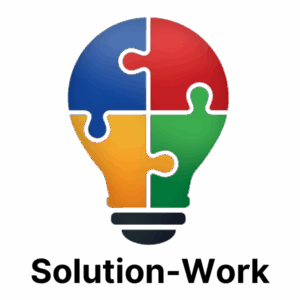AI technology is now ubiquitous in everyday life, and as it converges, cloud computing and AI/ML will unlock enormous value and transform most industries.
The cloud platforms provide all the necessary infrastructure and resources to train and deploy AI/ML models at scale. Kubernetes is ideally positioned to take the lead and act as a critical enabler for AI/ML workloads in terms of scalability, flexibility and automation.
Sebastian Scheele, CEO and founder of Kubermatic, sheds light on the most important aspects of Kubernetes in the context of artificial intelligence.
Important trends in AI/ML integration with Kubernetes
The integration of AI/ML with Kubernetes is characterized by several important trends that improve the deployment, management and scalability of workloads:
- Containerization of AI/ML workloads: Here, containers bundle AI/ML models with their dependencies into a single portable unit. This ensures consistency across different environments and simplifies the deployment and management of these models. Kubernetes has therefore become a perfect platform for the provision of AI/ML.
- Automated machine learning pipelines: Kubernetes enables the automation of end-to-end machine learning pipelines, from data ingestion and pre-processing to model training and deployment. Tools like Kubeflow and MLflow make this a simple process when automated on Kubernetes.
- Scalability and resource management: Kubernetes provides dynamic scaling to ensure that the resources required by AI/ML workloads can be well managed – allowing models to handle varying loads and demands seamlessly and without manual intervention.
- Edge AI/ML: With the advent of edge computing, there are use cases where Kubernetes is used to deploy AI and ML models very close to the data source. This minimizes latency and increases real-time processing capabilities.
The biggest challenges in AI/ML integration with Kubernetes
Despite the many benefits, integrating AI/ML with Kubernetes comes with some significant challenges that organizations need to overcome:
- Setting up and managing Kubernetes AI/ML workloads can become very complex and requires a high level of expertise in both Kubernetes and AI/ML. This last aspect could prove to be a bottleneck for adoption in organizations that do not have the appropriate resources.
- Resource allocation and optimization: AI/ML workloads are very resource intensive; therefore, these resources must be carefully allocated and optimized to avoid competition for resources and prevent wastage of resources.
- Security and compliance: The security and compliance of AI/ML models and data in Kubernetes environments will continue to be critical. The organization must establish strict security controls to prevent the loss of sensitive data and violations of regulations.
- Monitoring and maintenance: AI/ML models require continuous monitoring and maintenance to ensure the correct performance and accuracy of the models. Kubernetes provides some of the monitoring frameworks and tools in the integration that fulfill this purpose perfectly.
Best practices for AI/ML integration with Kubernetes
To effectively integrate AI/ML with Kubernetes, organizations should consider some of the following best practices to ensure optimal performance, scalability and security:
- Use a modular approach: Divide AI/ML pipelines into modular components and containerize each step for better flexibility and manageability. This approach can be quickly implemented during troubleshooting to improve scalability.
- Use Kubernetes-native tools: Kubernetes native tools for managing AI/ML workloads, such as Kubeflow, TensorFlow Serving and Seldon, enable out-of-the-box integrations and extensions designed specifically for Kubernetes environments.
- Implement robust CI/CD pipelines: Establishing CI/CD pipelines for automatic testing and deployment of AI/ML models is essential. This would make it easier to perform such iterations quickly and reliably as model updates are rolled out.
- Resource management optimization: Organizations should properly utilize resources by using features such as quotas, limits, and horizontal pod autoscaling in Kubernetes to optimize resource allocation to avoid over- or under-utilization.
- Focus on security and compliance: It is important to implement strong security measures, including network policies, encryption, access controls, audits and updates in line with changing regulations.
How Kubermatic uses AI/ML integration with Kubernetes
As AI/ML and cloud converge, Kubermatic is working to provide organizations with many ways to easily integrate AI/ML technologies into their Kubernetes landscape. Tools for automated deployment, scaling and management of AI/ML workloads enable Kubermatic to address many of the challenges organizations face.
- Automated pipeline management: Companies can easily automate their AI/ML pipelines and free themselves from the need to set them up.
- Scalable infrastructure: This platform optimizes resources for AI/ML workloads by providing the ability to dynamically scale functions.
- Security and compliance: Kubermatic provides robust, built-in security features to protect AI/ML models and data so organizations can comply with existing regulations.
- Comprehensive monitoring: Kubermatic offers integrated monitoring and warning tools that provide a continuous overview of the status and performance of the AI/ML models.
Conclusion
The integration of AI/ML technologies into the Kubernetes ecosystem truly offers the industry immense opportunities for innovation and efficiency gains. Of course there will be challenges, but with best practices and a platform like Kubermatic, the task will be much easier to accomplish. The future of intelligent applications will be dominated by Kubernetes as the synergy between cloud computing and AI/ML continues to grow. Organizations will unlock new performance and scaling potential by deploying Kubernetes with AI/ML, giving them an edge in a rapidly evolving landscape.
(pd/Kubermatic)
















